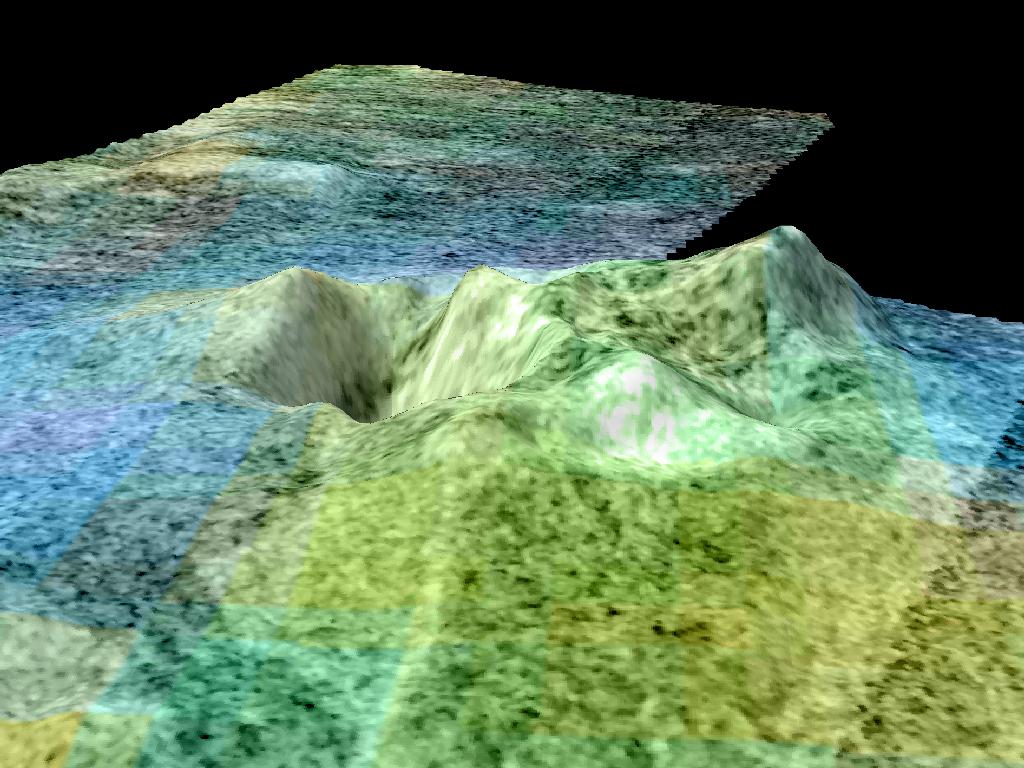
Research
Research
The National Air and Space Museum is always building on its strong record in scholarship with its curators, fellows and scientists continuing to conduct research that increases our understanding of aviation and space exploration's role in history; science and technology's central place in modern life; and the latest findings about our solar system. Activities include geologic field studies; research of Earth-like planets and direct involvement in planetary missions; contributing to professional organizations and societies; conducting historical research; hosting symposiums; and writing scholarly and popular books, papers, and articles.
Aeronautics and Space History
Curators and museum specialists in the Aeronautics Department and the Department of Space History conduct research related to all aspects of flight in the atmosphere and the history and technology of spaceflight, space science, and exploration. This research is essential in developing exhibits for the public, selecting artifacts for the Museum's collection, writing publications, and educating the public through lectures and other means.
It was a busy year for the curatorial team releasing a number of great books:
- John D. Anderson, The Grand Designers: The Evolution of the Airplane in the 20th Century, Cambridge University Press
- Paul E. Ceruzzi, GPS, MIT Press
- Martin Collins, A Telephone for the World: Iridium, Motorola, and the Making of a Global Age, Johns Hopkins University Press
- David H. DeVorkin, Fred Whipple’s Empire: The Smithsonian Astrophysical Observatory, 1955-1973, Smithsonian Institution Scholarly Press
- Teasel E. Muir-Harmony, Apollo to the Moon: A History in 50 Objects, National Geographic
- Michael J. Neufeld, Spaceflight: A Concise History, MIT Press
They also presented papers at professional conferences, gave professional talks in a variety of venues, wrote book reviews, contributed chapters to books, and wrote scholarly articles. View a complete list of Aeronautics and Space History writings
Center for Earth and Planetary Studies
The Center for Earth and Planetary Studies (CEPS) is the scientific research unit within the National Air and Space Museum. Its scientists conduct an active research program in planetary and terrestrial geology and geophysics.
In FY 2018, CEPS scientists authored or co-authored 21 papers and maps in peer-reviewed science journals. Three of these appeared in high-impact journals such as Nature Geoscience, and Geophysical Research Letters. View a complete list of CEPS writings.
Staff Awards
Staff received numerous awards from respected outside organizations and associations in 2018, including the Geological Society of America, NASA, and the American Institute for Aeronautics and Astronautics. View a complete list of staff awards.
Spotlight

Photo credit: NASA/JPL-Caltech/UCLA/MPS/DLR/IDA/PSI. Ahuna Mons is a cryovolcanic dome on Ceres, a dwarf planet whose orbit lies between Mars and Jupiter. These types of icy volcanoes in our solar system are the topic of study for CEPS researcher Dr. Lynnae Quick.
Ideas That Defy – Cryovolcanism
Think volcano, think sub-zero temperatures, way subzero, right? Not for most people. Volcanic eruptions usually are paired with words like “fiery.” But, head out into the solar system to the space between Mars and Jupiter, and on the dwarf planet Ceres you’ll find ice volcanoes, and there are many more on the icy moons that circle the farther planets of the solar system. Dr. Lynnae Quick spends her days researching the cryovolcanoes that have, are, and will again shape these distant worlds.
Dr. Quick is part of the Center for Earth and Planetary Studies (CEPS) at the Museum and her field is a relatively new one. Only in the last couple of decades have probes such as Cassini, Galileo and Dawn given scientists a good look at cryovolcanoes that had been theoretically discussed before. Cryovolcanism was first spotted by Voyager 2 on Neptune’s moon Triton in 1989. However, the photographic resolution was very low.
In fact, Cassini got the first close-up look at what appeared to be an icy eruption when it flew past Enceladus in 2005, just a couple of years before Quick began work at Johns Hopkins Applied Physics Lab studying Jupiter’s moon Europa. “It turned out my two dissertation advisors were a terrestrial volcanologist and an expert on icy moons, so the two came together in this research,” Quick said. She added that her undergraduate and master’s degrees in physics provided an important background in understanding the behavior of fluids and how they move.
“On these moons, it is so cold that ice behaves like bedrock does on earth,” Quick explains. She notes that like a terrestrial volcano, it’s the temperature difference that can cause eruptions. “When the surface is -173 degrees C, icy lava that erupts at 0 degrees is much warmer.” She adds that also like their Earthly counterparts, cryovolcanoes can erupt violently like Mount St. Helens, or with slower moving flows like Kilauea in Hawai’i.
Being part of the Museum is a special part of being a CEPS researcher. She gets to share information directly with the public by helping write scripts for galleries based on her work. Even if many visitors are not aware of CEPS, “The research here is vibrant and contributes to current and future NASA missions,” said Quick.
She herself is working on a future mission destined for Europa in the mid-2020s. Quick is working on the Europa Imaging System (EIS, pronounced “ice’ of course), which will have both a narrow-angle very high-resolution camera and wide angle high-res camera. These will enable the best images yet (including in 3D).
What we learn from EIS, and the research Quick and others in her field are doing, will help us better understand how planets and moons with cryovolcanoes and indeed Earth have changed over billions of years. And exploring the solar system to understand our neighborhood and our home planet are what the work of CEPS is all about.

